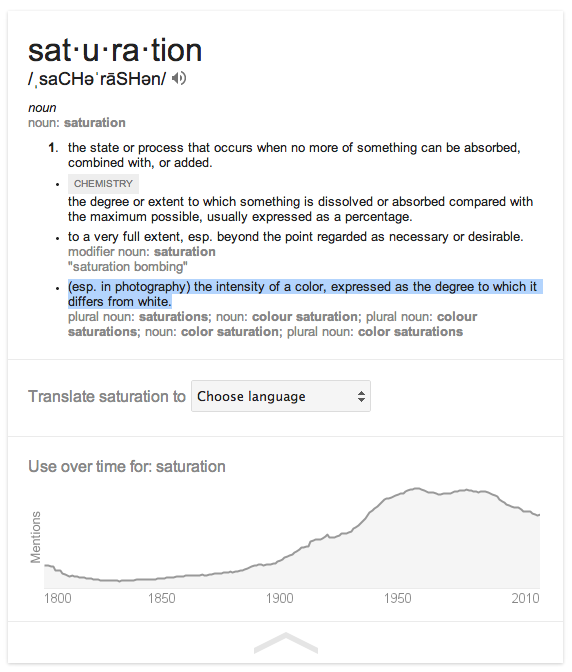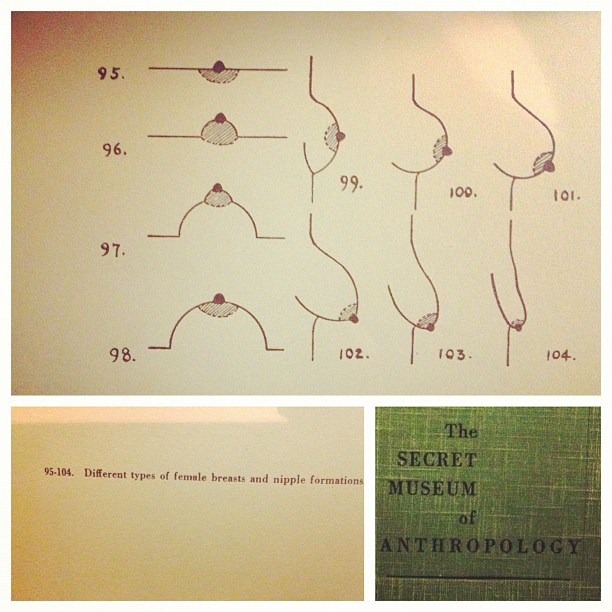Department Colloquium is over. I had some nice questions on why I chose to do a letter and some good feedback on some areas to expand/move forward. The act of putting the first first draft online was good. I thought it might be nice to share how it evolved since people were kind enough to read the first iteration and send me feedback.
The Talk
For the past few years anytime I’ve read McLuhan it has been while I am in the process of reading Fanon. As a result, their words swirl together in my head as though they are in conversation. While the most common link take McLuhan and Fanon together because McLuhan samples A Dying Colonialism in War and Peace in the Global Village, I am making another connection today. Arun Saldanha briefly touched on this connection in the 2010 article “Skin, affect, aggregation: Guattarian variations on Fanon”, but I am pushing it further as I move towards developing a way to understand the intersection of race, media, and technology, especially as we trace the evolution of this intersection to its present moment of the Digital.
The piece I am sharing with you today is a thought experiment. It is influenced by D. Soyini Madison’s Performing theory/embodied writing. It’s playing with McLuhan’s method of writing as though making a collage, and it’s answering Fanon’s call in The Wretched of the Earth, to use imagination to create a new now. My new now speaks with the both McLuhan and Fanon through the “Playboy Interview” and the introduction of Black Skins, White Masks.
My hope with this piece, tentatively titled “A Letter to Frantz and Marshall”, is that it can eventually move into a larger project that might or might not be a dissertation chapter examining the role of fibre optic cables, light as pure information, and the “net of colonization” to examine how the digital creates a reparative space where we as a society can create explosions that allow us to imagine the body and the human in a new light.
Please note, for the purposes of this piece I will be speaking with both men on a first name basis. Frantz is Frantz Fanon and Marshall is Marshall McLuhan.
=== A Letter to Fanon and McLuhan===
Dear Frantz & Marshall,
I know the two of you never officially met, except for that brief instance where Frantz’s words become yours in War and Peace in the Global Village Marshall. You are meeting now though, in my head, and I am attempting to move that meeting to an external data storage device as words on a virtual page, that will eventually move to ink on paper.
Marshall, you said something along the lines of technology is the extension of the human body in the Medium is the Massage. The entirety of Understanding Media: The Extensions of Man also explores this relationship. When I think of this idea in relation to your reflections in “the Playboy Interview”, reflections that lead you to saying black bodies are left outside of technology, I can’t help but smile a little as I remember Fanon’s point in Black Skin, White Masks. The Black man is not fully human. It seems that what you are speaking towards when you speak of the issues of the Black man (and the Indian to a lesser extent) Marshall, are the societal effects of the technologically extension of a Human body that is assumed to be less than Human. This seems to be a self-fulfilling prophecy, or a bit of a circle because the black man/person being less than human is directly linked to their inability to be seen as fully connected to and through technology.
Frantz, you said something that I am finding myself seeing true about the Human experience, what and who is human is determined by the negation of the black man. If media technologies are all just an extension of the human body, and that which in fact makes us fully human and connected, returning us to the global village without margins or centers, then it stands to reason that to understand the Human we must also understand the relationship between the black man and technology. It is the relationship defined by a technological lack that will show us the blind spots in our Utopian vision.
If we look at technology as the extension of man, it seems we must begin to see slaves as the foundational technology of not just the United States, but the West as a whole as connected through the Atlantic slave trade. If we understand that these bodies were seen as a lack due to their distance from the technologies of the West we can see that they are not human bodies but are rather a media technology like any other media technology. It becomes easier for Black bodies to be subsumed into a system of commerce. As media technology they served as an extension of the body of their owners, increasing the size, scale and pace of agriculture in a plantation economy as machines in the garden. Their bodies, not their humanity, made them central to the process of taming the frontier and cultivating the new world towards a European vision. Their bodies allowed for time and capital to grow at a new pace, across more space in ways not seen before the Atlantic slave trade became a well-oiled machine, delivering raw technology for hundreds of years. If we extend this beyond the Atlantic slave trade to include the colonization of Africa in the 1800s, Jim Crow in the United States, and Apartheid in South Africa, the timeline is even longer. When we look at the issues of Neo-colonialism, the continued territory, protectorate, or militarily occupied status of many formerly colonized African states, as well as the penal labor system that is currently growing in the United States, we might even say that the black body as part of the industrial machine never ended. It is important to note though that black bodies are no longer the only bodies that make up this labor technoloy. That is, however, a separate conversation.
Both of you think an over extension of the body through technology leads to psychosis. The psychosis is predicated on a loss of self in relation to the body. Technology is to be built upon, extended, evolved and, subsumed. For the black man the extension is based on an over association with the White Man. If we are thinking through this with the parameters Marshall laid out coupled with the history of Black slaves as technology, the extension you are illustrating Frantz shows a moment of technology becoming sentient, believing itself to be too Human.
The difference seems to be, if I understand you both correctly, that the causes and results of the manifestation of the psychosis differs from the White man to the black man. The black man’s psychosis is in the realization that he can never be as human as the white man in his quest for more and more technology even as the white man tells the black man to try and catch up. The rhetoric we continue to hear today around digital divide constructs the black man this way. The white man though, in a need to assert his own humanity and recreate centuries of social structuring is compelled to increase the distance between him and those bodies he imagines as closer to raw technology. The White man overextends himself in this quest, losing sight of his body, becoming post-human. In his post-humanity he removes the capability of seeing the Black man as human, even as he, the white man, longs to go back to an imagined before time, a time where he too was Human. The psychoses of the white man comes from the Black mans closeness to his body. His inability to be extended keeps him closer to the human than the flight away that is occurring in the White post-humanism movement. A second layer of psychosis for the white man comes from watching the Black man work through his own psychosis, a psychosis characterized by a compulsion to emulate the White Man in an attempt to be recognized as Human, without access to the technological tools required to do so. No matter how hard a black man tries to reach the world of the white man, his almost human hands can never touch it.
Attempting to understand this psychosis is why I am writing both of you. I think both of you are hinting towards a level of consciousness that is innate to humanity that the black man has better access to perhaps because he hasn’t extended his body outward through technology as much as the white man (his extension, while outward facing, is more internal). Despite the internal nature of this extension, the message received through technological mediation outside of the body causes misunderstanding that blinds and alienates the Black Man from this other level of consciousness because for the black man to have the realization that he can access it on a total scale would be an annihilation of the current social order.
Marshall, you said,
“The cultural aggression of white America against Negroes and Indians is not based on skin color and belief in racial superiority, whatever ideological clothing may be used to rationalize it, but on the white man’s inchoate awareness that the Negro and Indian — as men with deep roots in the resonating echo chamber of the discontinuous, interrelated tribal world — are actually psychically and socially superior to the fragmented, alienated and dissociated man of Western civilization,”
Are you not speaking directly to Frantz and his beliefs that that it is the mistake of the black man to not already realize he is the defining instance of humanness and humanity, for it is he who has access to the zone of non-being. I think, Frantz, you can clarify this for me. You said,
Running the risk of angering my black brothers, I shall say that the Black is not a man.
There is a zone of nonbeing, an extraordinary sterile and arid region, and incline stripped bare of every essential from which a genuine new departure can emerge. In most cases the black man cannot take advantage of this descent into a veritable hell.
Man is not only the potential for self-consciousness or negation. If it be true that consciousness is transcendental, we must also realize that this transcendence is obsessed with the issue of love and understanding. Man is a “yes” resonating from cosmic harmonies. Uprooted, dispersed, dazed, and doomed to watch as the truths he has elaborated vanish one by one, he must stop projecting his antinomy into the world” (xii).
While you started with the transcendental consciousness, Marshall, it is where you ended your interview:
“I expect to see the coming decades transform the planet into an art form; the new man, linked in a cosmic harmony that transcends time and space, will sensuously caress and mold and pattern every facet of the terrestrial artifact as if it were a work of art, and man himself will become an organic art form.”
Both of you see this movement towards the transcendental starting with the tribal, or black man. And both of you see the inevitable violence the path of technology leads us on if we continue to see certain Humans as wretched and others as technologically superior. As long as superiority is understood by the ability of a group of Humans to master, contain and control the messages of the mediums, and make them obsolete we will never break society of our racially based psychoses. (As an aside, if we see the black slave as pure technology, and technologies as building on top of each other making previous versions obsolete, the black and Indian man never had a chance.) When I read these lines,
“The one inexorable consequence of any identity quest generated by environmental upheaval is tremendous violence. This violence has traditionally been directed at the tribal man who challenged visual-mechanical culture, as with the genocide against the Indian and the institutionalized dehumanization of the Negro”.
I am not sure who I am reading until I remind myself that Marshall, you were more interested in the Indian. Had it been you Frantz, I think you would have said Arab. Marshall, You spoke of the real possibility of the negro being exterminated through, something that I think can be softly confirmed if we look at statistics showing various ways people are moved from society, through imprisonment, literacy, or lack of access to the tools and technologies needed to be fully Human. As though you saw this on the horizon as well, Frantz, you had already written a response, a call, and a reminder:
I ask that I be taken into consideration on the basis of my desire. I am not only here-now, locked in thinghood. I desire somewhere else and something else. I demand that an account be taken of my contradictory activity insofar as I pursue something other than life, insofar as I am fighting for the birth of a human world, in other words, a world of reciprocal recognitions. He who is reluctant to recognize me is against me. In a fierce struggle I am willing to feel the shudder of death, the irreversible extinction, but also the possibility of impossibility (193).
Where do we go from here though?
I am thinking the three of us can push this a little bit further. If we acknowledge that the black body represents pure technology, and technology is simply a way that we extend our own human bodies, and the medium that we use for this extension has its own message, then I think we can say the medium that represents humanity is the black man. Just as the light is pure information, to understand how we have come to define the human, especially as we try to understand the human through media technology, we must first understand the relation of humanity and humanness to the black body, the body that I think became a cyborg long ago.
The next step for me is to expand this conversation and explore it through the role of black women, looking specifically at society’s current cause of psychosis and division, Digital Media.
Sincerely,Jade
References:
Fanon, Frantz. Black skin, white masks. Grove press, 1994.
Fanon, Frantz. The wretched of the earth. Grove Press, 2005.
Hayles, N. Katherine. How we became posthuman: Virtual bodies in cybernetics, literature, and informatics. University of Chicago Press, 1999.
Madison, D. Soyini. “Performing theory/embodied writing.” Text and Performance Quarterly 19, no. 2 (1999): 107-124.
Marx, Leo. The machine in the garden: Technology and the pastoral ideal in America. Oxford University Press, USA, 2000.
McLuhan, Marshall, Quentin Fiore. The medium is the massage. New York: Bantam Books, 1967.
McLuhan, Marshall. Understanding media: The extensions of man. MIT press, 1994.
McLuhan, Marshall, Quentin Fiore, and Jerome Agel. War and peace in the global village. McGraw-Hill, 1968.
Nakamura, Lisa, and Peter Chow-White, eds. Race after the Internet. Routledge, 2012.
Norden, Eric. “The Playboy Interview: Marshall McLuhan.” Playboy Magazine(1969).
Saldanha, Arun. “Skin, affect, aggregation: Guattarian variations on Fanon.”Environment and planning. A 42, no. 10 (2010): 2410.



















